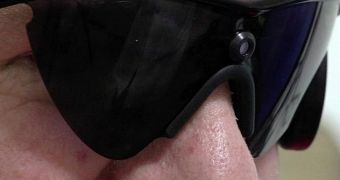Blindness is one of the most debilitating conditions that humans can suffer from, but medicine is getting better and better every day, and now cybernetic science is starting to help out properly too, as Roger Pontz will attest.
Roger Ponts, a man who lives in Michigan, has been suffering from an inherited, degenerative eye disease for years.
That means he has been legally blind for a long while, though even that's making it sound better than it really is.
Legal blindness means that the visual field is of 20 degrees or less, and that visual acuity is of 20/200 (a person can see at 20 feet what a person with 20/20 vision sees at 200 feet).
From the sound of things, Pontz was in an even worse position, being able to see only in black and white.
Now, though, he can see shades and shapes (Associated Press), and his visual memory is steadily returning thanks to a bionic eye implant.
That much was established during Pontz' latest appointment at the University of Michigan Kellogg Eye Center.
Well, technically, it's not just the left eye implant that is at work here. A set of glasses with an integrated camera was also included in the device.
First, the doctors performed eye surgery and implanted an artificial retina in Pontz' left eye, though it's not as high-tech as you might dream.
Instead of somehow integrating a camera sensor, auxiliary circuits and the necessary software, the retina “only” has some electrodes built into it.
Those electrodes receive a series of electrical pulses wirelessly transmitted by the camera integrated in the dark glasses. The pulses basically stimulate whatever healthy cells the retina still has, prompting them to relay information to the optic nerve.
So it's not an actual retina/eye replacement, but something that helps what's already there work a bit better than before.
Pontz has shown the ability to identify and grab his cat, deduce that a flash of light was actually his grandson going to the kitchen, etc.
For those of you who want to know exactly what the man's eye condition is called, the scientific term is retinitis pigmentosa. It's an inherited disease that made itself known when he was a teenager. It causes light-sensitive retina cells (rods and cones) to degrade. Side vision leaves first, then night vision and, finally, the central vision, leading to near blindness.
Pontz was able to recognize colors (though, admittedly, not before moving his eyes left and right a few times), which is great progress, according to the doctors.

 14 DAY TRIAL //
14 DAY TRIAL //